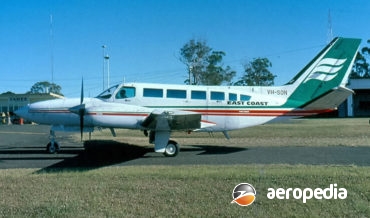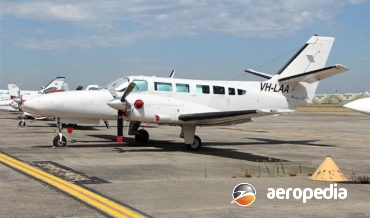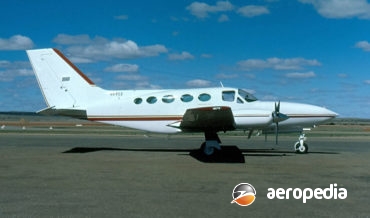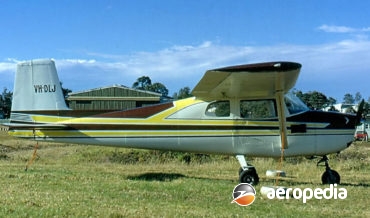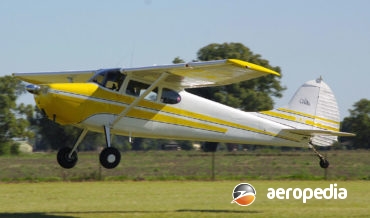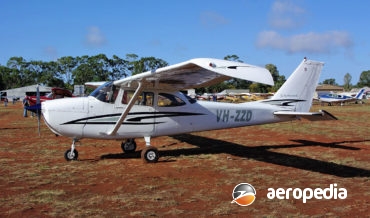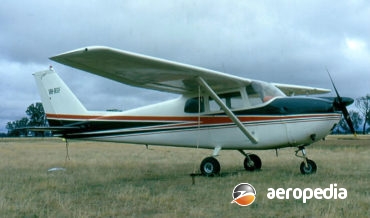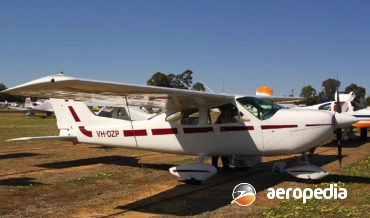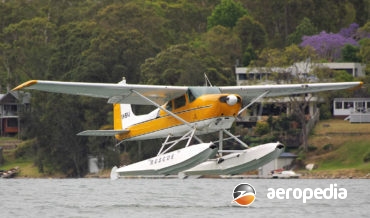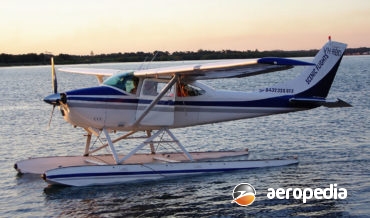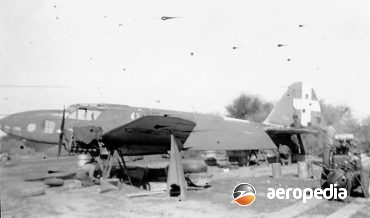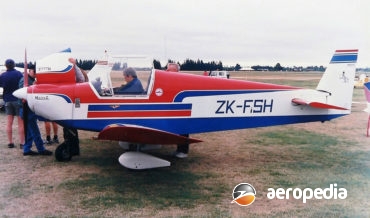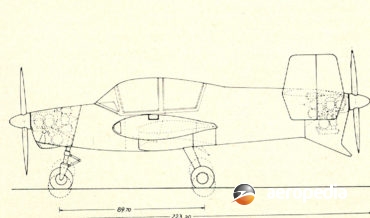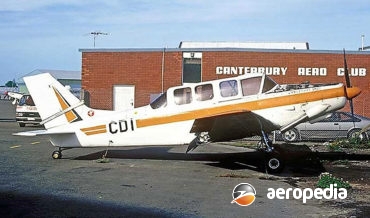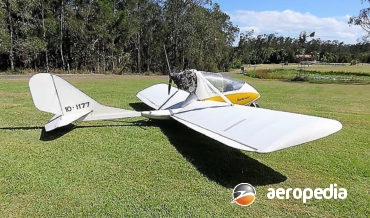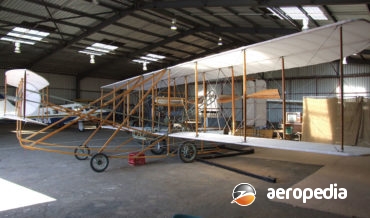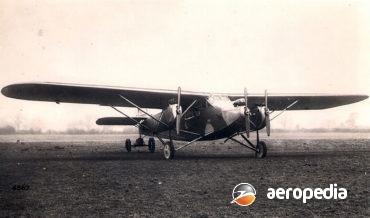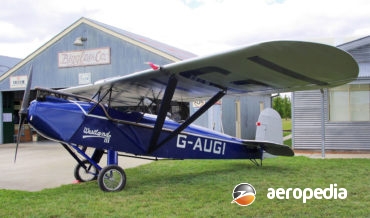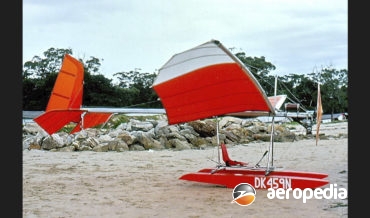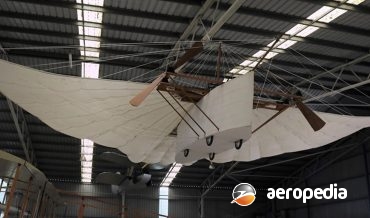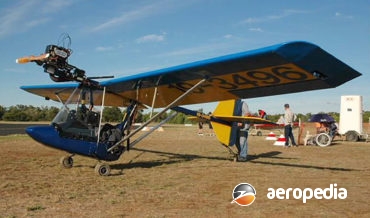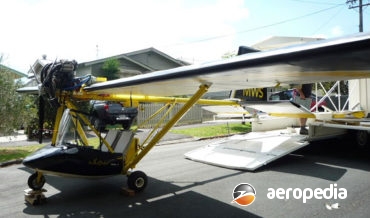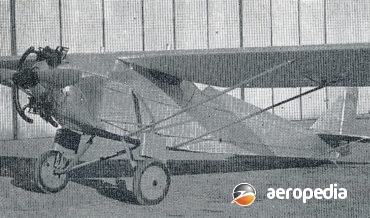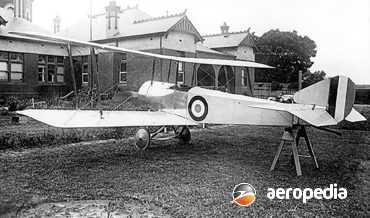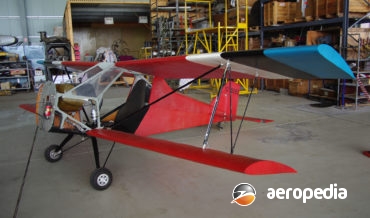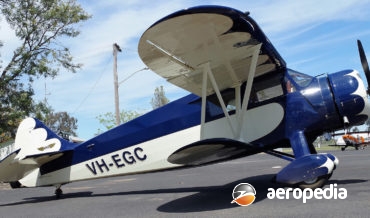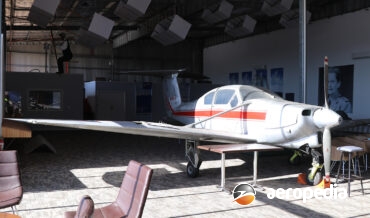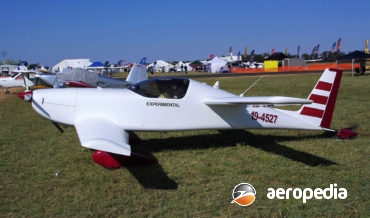All Contents
Contents
Following commencement of delivery of production aircraft late in 1976, the Model 404 Titan was offered in a range of variants designed specifically to meet the needs of businessmen and commuter airlines which required a large twin-engine aircraft with normally aspirated engines rather than turbines.
David C. Eyre
- May 17, 2019
The Model 406 Caravan II was developed as a joint venture between Cessna and its French associate, Reims Aviation, for the utility market. Reims has built over 6,000 Cessna-designed aircraft over the years and it was initially a joint concern but in 1989 Cessna sold its interest to the
David C. Eyre
- May 17, 2019
On 10 December 1969 Cessna announced it was introducing a new pressurised twin-engine aircraft known as the Model 414 and this aircraft combined the basic fuselage and tail unit of the Model 421 with the wing of the Model 401 fitted with two Continental TSIO-520-J turbo-supercharged engines driving three-blade constant-speed
David C. Eyre
- May 17, 2019
Designed as a successor to the Cessna Models 120 and 140, production of which concluded in the mid 1950s, the 150 series proved to be one of the most popular civil training aircraft, with about 22,839 examples constructed and delivered between 1959 and 1977.
David C. Eyre
- May 17, 2019
The 152 was introduced to the Cessna range in 1978 as a redesign of the 150 and was, like its competitors the Beech Skipper and Piper Tomahawk, aimed at the training market as a new design.
David C. Eyre
- May 17, 2019
In 2006 Cessna announced it intended to produce a series of new designs using modern technology and, amongst these, was a new training aircraft, seating two, to meet new light sport aircraft regulations introduced into the United States.
David C. Eyre
- May 17, 2019
The Model 170 was introduced into the Cessna range in 1948 as a development of the earlier two-seat light cabin monoplanes, the Models 120 and 140, and to meet a requirement among operators in the United States for four seats.
David C. Eyre
- May 17, 2019
Derived from the Model 170, the 172 differed initially mainly in that it had a tricycle undercarriage.
David C. Eyre
- May 17, 2019
The Cessna 175 series was introduced to the Cessna range in 1958. The Skylark was a deluxe version of the basic 175, in a similar way to the Skyhawk being a deluxe development of the 172.
David C. Eyre
- May 17, 2019
The Cessna 177 Cardinal RG was introduced into the Cessna range in 1970 and is basically a variant of the 177 series with a hydraulically retractable tricycle undercarriage.
David C. Eyre
- May 17, 2019
The Cessna 177 series of aircraft, which was first placed in production in 1967, was originally released in two main models, the 177 and the Cardinal.
David C. Eyre
- May 17, 2019
The Cessna 180 series of aircraft commenced production in February 1953 and continued until, like other single-engine Cessna models, it ceased in 1981 after some 6,193 examples had been built.
David C. Eyre
- May 17, 2019
The Model 182, which was introduced into the Cessna range in 1956, initially used the same airframe and engine as the Model 180, but it had four seats for executive use rather than for the utility role, and was fitted with a tricycle undercarriage.
David C. Eyre
- May 17, 2019
In 1932 Mr Clifford Carpenter, a nephew of Sir Walter Carpenter, a member of the W R Carpenter & Co organisation, assisted by Messrs W Murrell, H Wyatt, C Scott and R A Grey, built a light aircraft over a period of two years in the garage of Borrows
David C. Eyre
- May 17, 2019
Intended to meet the requirements of ‘bush’ fliers around the world, the Cessna 185 was designed a s a rugged utility aircraft.
David C. Eyre
- May 17, 2019
The Ghibli was a general purpose light reconnaissance bomber of low-wing configuration with a fixed spatted tailwheel undercarriage, a single fin and rudder, and built for the Italian Air force in the mid 1930s.
David C. Eyre
- May 17, 2019
Initially designed in the United States by Carlson Aircraft Inc of East Palestine, Ohio, the Sparrow was modified to meet Rule 101.55 by Lake Macquarie Aviation, the type initially to be built for the Australian market at Warners Bay, NSW, and later plans were announced to construct both it and
David C. Eyre
- May 17, 2019
The CH-100 series of light single-engine aircraft was designed by German born, Canadian domiciled, designer Christopher Heintz and was designed for amateur construction, being basically a smaller variant of the CH-200 two-seater.
David C. Eyre
- May 8, 2019
The Libellula was designed by Mr Yager of Lewisham, NSW, being a light twin-engine touring aircraft for amateur construction with plans to be made available to builders.
David C. Eyre
- May 8, 2019
The one and only example of the Yeoman Hanes 250 aircraft was built initially at Bankstown by Yeoman Aviation as a single-seat agricultural monoplane, a Model 250R Cropmaster, and was registered as VH-DEQ (c/n 110) on 28 January 1964 to the manufacturers for testing.
David C. Eyre
- May 8, 2019
The Sportsman was designed and developed by Colin Winton of Winton Aircraft of Coomera, QLD as a cheap, good handling light single-seat sporting aircraft powered by one of the popular at the time Volkswagen engine conversions.
David C. Eyre
- May 8, 2019
In 1916 Mr C W Wittber built a biplane which was similar in appearance to a Farman, known as the Wittber Biplane or Wittber Boxkite. The engine fitted, a three-cylinder Anzani, had previously been fitted to a Bleriot XI imported by Mr F J Jones of Adelaide.
David C. Eyre
- May 8, 2019
On 17 December 1903 the Wright brothers, Wilbur and Orville, achieved the first successful, powered, sustained and more-or-less controlled flights in a heavier than air machine in the midst of a gusty, wintry, gale on the Kitty Hawk promontory in North Carolina between the Albermarle Sound and the Atlantic Ocean.
David C. Eyre
- May 8, 2019
The Wicko Wizard was a wire-braced low-wing monoplane developed from the Lion powered by a four-cylinder 60-kw (80-hp) ADC Cirrus II engine (from Avro Avian VH-UFY).
David C. Eyre
- May 8, 2019
In early 2017 Morgan Aeroworks of Taree, NSW stopped production of its range of aircraft, comprising the Sierra and Cougar light sport aircraft, the owner of the Company, Gary Morgan, moving back to New Zealand.
David C. Eyre
- May 8, 2019
The Westland IV was designed and built by the Westland Aircraft Works at its Yeovil facility in Somerset in 1928, being an attractive small, high wing, taxi or feeder line aircraft constructed of wood, with fabric covering and fitted with tail parts from a Westland Wapiti.
David C. Eyre
- May 8, 2019
The Westland Widgeon, a parasol-wing aircraft with fabric covering and a spruce girder fuselage, was built for the 1924 Lympne Trials in the UK.
David C. Eyre
- May 8, 2019
Ronald Wheeler was one of the people who foresaw the coming boom in ultralight aircraft in the 1970s and was a pioneer in this area.
David C. Eyre
- May 8, 2019
Gustave Whitehead as he was known in the United States (born Gustav Albin Weisskopf on 1 January 1874 in Leutershausen in Bavaria) was born and raised in Germany and was trained in Augsburg as an engine builder.
David C. Eyre
- May 8, 2019
Designed as a simple to build and operate ultra-light aircraft, the Magpie was designed by Mr W “Bill” Whitney and was built and flown by Messrs Clyde Howard and Arnold Trapp.
David C. Eyre
- May 8, 2019
The Fatboy is one of a series of ultra-light aircraft designed in the United Kingdom by Michael Whittaker, this being the first two seat side-by-side design produced by his company, with more than 200 sets of plans being sold by 2010.
David C. Eyre
- May 8, 2019
After construction of the Wikner Wicko, Geoffrey Neville Wikner designed and his company, Australian Aircraft Co at Archerfield, QLD, built a high-wing monoplane powered by the same 45-kw (60-hp) Anzani radial engine that had been fitted to the earlier aircraft.
David C. Eyre
- May 8, 2019
War Aircraft Replicas of Tampa, Florida, was formed to design and market plans and kits of half-scale (50%) replicas of famous aircraft of World War II and since 1974 a number of designs have been made available to the amateur builder, types including the Sea Fury, A6M5 Zero, F4U Corsair,
David C. Eyre
- May 8, 2019
The Watson Windwagon light aircraft were developed from the Parker Teenie Two series which was designed by Calvin Parker and built in some numbers around the world.
David C. Eyre
- May 8, 2019
Basil George Watson was born in Bendigo, VIC on 12 October 1894 and was the son of a mining investor.
David C. Eyre
- May 8, 2019
The WAACO Staggerbipe was first produced in the early 1980s by the West Australian Aircraft Company of Box Hill, VIC as a single-seat light sporting biplane and was made available in kit form for the amateur constructor.
David C. Eyre
- May 8, 2019
The Waco series of touring biplanes was first released in 1931 by the Weaver Aircraft Co (WACO).
David C. Eyre
- May 8, 2019
The Sportsman is a light sporting aircraft produced in kit form by the Wag Aero Group at Lyons in Wisconsin.
David C. Eyre
- May 8, 2019
The Victa R-2 was a four-seat light monoplane designed for Victa Ltd by Mr Luigi Pellarini, designer of the Transavia Airtruk and a number of other aircraft.
David C. Eyre
- May 8, 2019
Although looking very similar to the Quickie series of aircraft, also being of canard configuration, the Dragonfly is a new design, being slightly larger and having, in the two-seat version, less power.
David C. Eyre
- May 8, 2019
Recent Comments
Archives
Categories
- No categories
Categories
- No categories
Latest Posts
Newsletter

